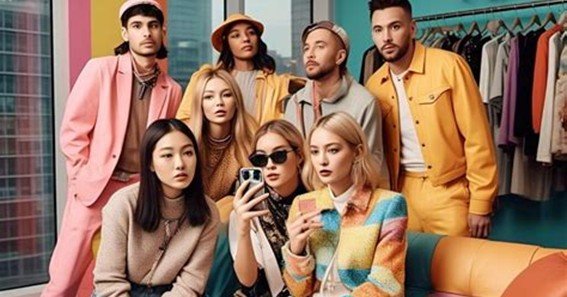Explore the complexities of influencer culture in 2025, where digital fame meets real-world consequences.
The Rise and Risks of Influencer Culture
In 2025, the influencer landscape has evolved dramatically. With platforms like TikTok, Instagram, and YouTube offering unprecedented reach, individuals can amass vast followings overnight. However, this rapid ascent often comes with pitfalls. The pressure to maintain relevance and engagement can lead influencers to make questionable decisions, blurring the lines between authenticity and sensationalism.
Notable Controversies Highlighting the Dark Side
1. Chiara Ferragni and the ‘Pandorogate’ Scandal
Italian influencer Chiara Ferragni faced legal repercussions after promoting a pandoro cake, claiming proceeds would benefit a children’s hospital. Investigations revealed that no such donations were made, leading to fines and the enactment of the “Ferragni Law” to regulate influencer promotions in Italy.
2. Gabriela Moura’s Kentucky Derby Appearance
Social media influencer Gabriela Moura sparked debates over appropriate attire after attending the 2025 Kentucky Derby in a revealing outfit. While some defended her choice as a statement of body positivity, others criticized it as attention-seeking behavior.
3. Piper Rockelle’s BrandArmy Controversy
Teen influencer Piper Rockelle faced backlash for her presence on BrandArmy, a subscription platform similar to OnlyFans. Critics questioned the appropriateness of her content, especially given her age, and raised concerns about parental oversight and exploitation.
The Psychological Toll of Online Fame
The relentless pursuit of likes, shares, and followers can have detrimental effects on influencers’ mental health. The constant need to curate a perfect online persona often leads to anxiety, depression, and burnout. Moreover, public scrutiny and the fear of “cancel culture” add layers of stress, making the influencer lifestyle more challenging than it appears.
Regulatory Measures and Ethical Considerations
As influencer marketing becomes more prevalent, governments and organizations are implementing regulations to ensure transparency and protect consumers. The “Ferragni Law” in Italy is a prime example, mandating clear disclosures in promotional content. Brands are also becoming more cautious, conducting thorough background checks before collaborations to avoid potential controversies.
Conclusion
The influencer phenomenon in 2025 underscores the delicate balance between digital fame and ethical responsibility. While social media offers vast opportunities, it also demands accountability, authenticity, and mindfulness from those who wield its power.
FAQ
Q1: What is the “Ferragni Law”?
A regulation enacted in Italy requiring influencers to disclose promotional content clearly, ensuring transparency in advertising.
Q2: Why did Gabriela Moura’s outfit at the Kentucky Derby cause controversy?
Her revealing attire sparked debates on appropriateness and attention-seeking behavior in public events.
Q3: What concerns were raised about Piper Rockelle’s BrandArmy account?
Critics questioned the suitability of her content on a subscription platform, especially given her age and the nature of the platform.
Q4: How does online fame impact influencers’ mental health?
The pressure to maintain a curated online image can lead to anxiety, depression, and burnout among influencers.
Q5: What measures are being taken to regulate influencer marketing?
Governments and organizations are implementing laws and guidelines to ensure transparency, such as mandatory disclosure of sponsored content.










